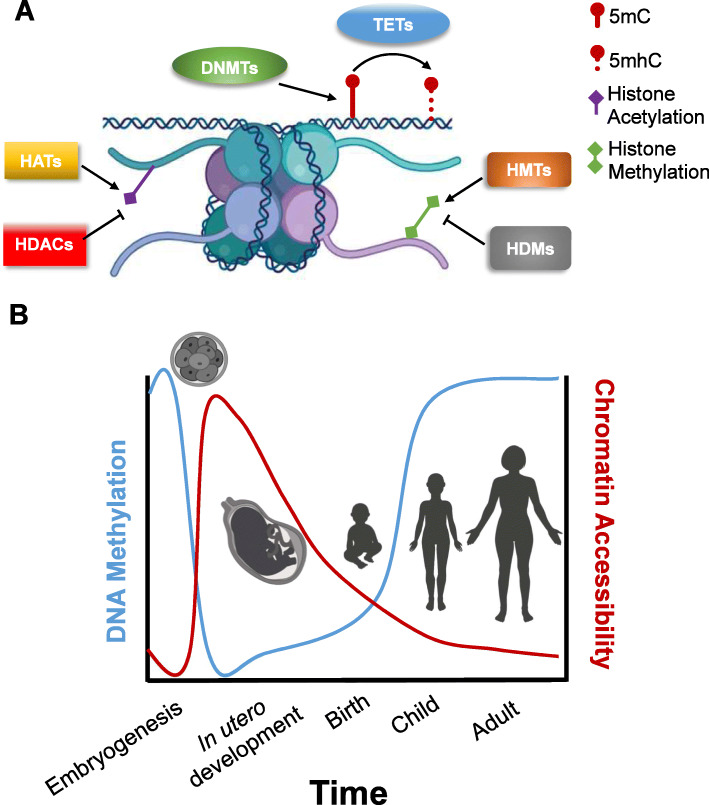Fig. 1.
There are multiple layers of epigenetic gene regulation that are tightly regulated during development. a The epigenetic landscape is dictated by a number of modifications to DNA and histones as indicated in legend. The primary modification to DNA is DNA methylation on the nucleotide cytosine (5′ methylcyrtosine, 5mC) by DNA methyltransferases (DMNTs). Methylated DNA can also be demethylated in a multistep process. The first step in this process is conversion of 5mC to 5′-hydroxymethylcystosine by ten-eleven translocation family proteins (TETs). At the histone level, histones can be covalently modified at multiple locations. The most common modifications are acetylation and methylation (lesser understood and not shown are histone phosphorylation and ubiquitination.) Histone acetylation is regulated by histone acetyltransferases (HATs) and histone deacetylases (HDACs). Histone methylation is regulated by histone methyltransferases (HMTs) and histone demethylases (HDMs). The balance of histone methylation of demethylation at different histone residues dictates chromatin accessibility. b DNA methylation and chromatin accessibility are tightly regulated during the course of brain development throughout the lifespan. While there are not direct studies comparing DNA methylation and chromatin accessibility in the same brain samples during development, here we schematize a summary of known studies that demonstrate a near inverse relationship between extent of DNA methylation (blue line) and chromatin accessibility (red line) over time

